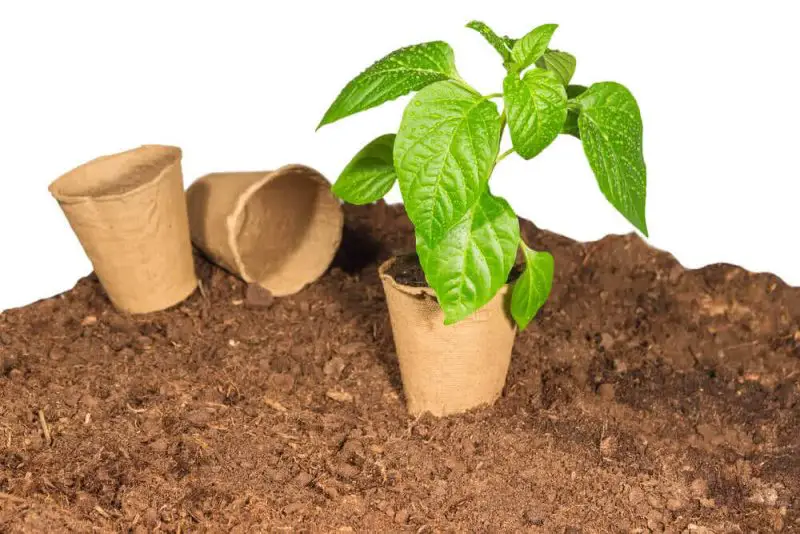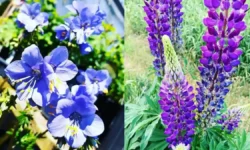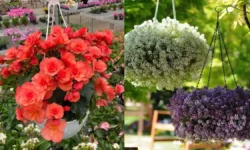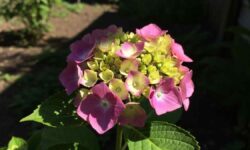Peat moss has long been considered a secret weapon among gardeners who aim to improve their soil quality and achieve healthier plants. Its unique texture, water-holding capacity, and ability to enhance soil structure make it a valuable component for various gardening and landscaping projects.
Understanding what peat moss does to soil and why gardeners love it can help you decide if it’s the right choice for your garden. This detailed guide explains its benefits, effects on soil, and practical applications.
Table of Contents
Understanding Peat Moss and Its Origins

Peat moss is a natural material derived from partially decomposed sphagnum moss found in peat bogs. Over thousands of years, layers of this organic material accumulate in wet, acidic environments, creating dense, fibrous masses. Unlike compost, which is fully decomposed, peat moss breaks down very slowly and retains much of its original texture, making it ideal for soil conditioning.
One of the reasons gardeners are fascinated with peat moss is its consistency. It is lightweight, sterile, and free from weed seeds or pathogens, making it a safe amendment for indoor and outdoor plants. Its neutral to slightly acidic pH also makes it suitable for acid-loving plants, providing a controlled growing medium.
Peat moss is harvested mainly in Canada, Europe, and parts of the United States, where vast peat bogs exist. While its environmental impact has been debated, sustainable harvesting practices are now more common, ensuring that gardeners can continue to enjoy its benefits without severely harming natural ecosystems.
What Does Peat Moss Do To Soil?
Peat moss is widely used to modify soil texture, structure, and fertility. Its fibrous, sponge-like quality allows it to hold significant amounts of water, which is gradually released to plant roots. This property is especially beneficial for sandy soils, which typically drain too quickly. By incorporating peat moss, sandy soil gains improved moisture retention, allowing plants to access water for longer periods.
In clay soils, peat moss works differently but just as effectively. Heavy clay tends to become compacted, limiting root growth and air circulation. Adding peat moss loosens the dense structure, improving aeration and making it easier for roots to spread. This improved soil structure also helps beneficial microorganisms thrive, contributing to long-term soil health.
Peat moss does not add significant nutrients to the soil, as it is not a fertilizer. Instead, it acts as a soil conditioner, enhancing the soil’s ability to retain nutrients. The increased cation exchange capacity (CEC) helps the soil hold onto essential minerals like nitrogen, potassium, and magnesium, making them more available to plants over time.
Why Gardeners Love Using Peat Moss
Gardeners appreciate peat moss for its versatility and reliability. Whether used in vegetable gardens, flower beds, or container plants, it consistently improves growing conditions. Its ability to hold moisture without becoming waterlogged is particularly valuable for seedlings and young plants, which are sensitive to inconsistent watering.
Another reason gardeners love peat moss is its cleanliness. Unlike some organic amendments, peat moss is weed-free and sterile, reducing the risk of introducing pests or diseases into the garden. This makes it an ideal choice for seed-starting mixes and greenhouse applications, where a clean and controlled environment is essential.
Peat moss also contributes to the long-term improvement of soil structure. With regular use, soil becomes more friable, easier to work with, and better suited for root development. Gardeners often notice healthier plants, increased yields, and vibrant flower blooms after incorporating peat moss into their soil preparation routines.
Peat Moss and Soil pH
One of the unique characteristics of peat moss is its slightly acidic nature, typically ranging from 3.5 to 4.5 on the pH scale. This makes it an excellent amendment for acid-loving plants such as blueberries, azaleas, rhododendrons, and camellias. By gradually lowering the soil pH, peat moss creates an environment where these plants can thrive and absorb nutrients more efficiently.
However, for plants that prefer neutral or alkaline soils, peat moss should be used with caution. In such cases, gardeners often balance its acidity by adding lime to the soil. Understanding the needs of your plants and testing your soil pH before adding peat moss ensures the best results and prevents potential nutrient imbalances.
Water Retention and Drainage Improvement
One of the biggest advantages of using peat moss is its exceptional water-holding capacity. It can absorb and retain up to 20 times its weight in water, slowly releasing moisture to plant roots as needed. This feature makes it especially useful in dry climates or during hot summer months, helping to reduce the frequency of watering.
At the same time, peat moss improves drainage in compacted or poorly aerated soils. By increasing the soil’s porosity, it allows excess water to move away from the root zone, preventing waterlogging and root rot. This balance of moisture retention and drainage creates optimal growing conditions for a wide variety of plants.
Peat Moss in Seed Starting and Container Gardening
Peat moss is a staple ingredient in seed-starting mixes due to its fine texture and sterile nature. It provides a soft, well-aerated medium that allows delicate roots to establish easily. Because it holds moisture evenly, seedlings receive consistent hydration, which is crucial for healthy germination and early growth.
In container gardening, peat moss is equally valuable. Potted plants often face challenges related to inconsistent watering and nutrient availability, but peat moss helps maintain a stable growing environment. By mixing it with perlite, vermiculite, or compost, gardeners can create lightweight, nutrient-retentive potting soils that encourage vigorous plant growth.
Environmental Considerations and Alternatives
While peat moss offers numerous benefits, its environmental impact has raised concerns. Peat bogs are important carbon sinks, and large-scale harvesting can release stored carbon into the atmosphere. As a result, some gardeners look for alternatives like coconut coir, compost, or leaf mold, which provide similar soil-conditioning benefits with less ecological impact.
However, when sourced from responsibly managed bogs, peat moss remains a sustainable option for gardeners who value its unique properties. Many suppliers now follow strict regulations to ensure minimal environmental disturbance and allow natural regeneration of harvested areas.
How to Use Peat Moss Effectively in Soil
Incorporating peat moss into soil requires proper mixing to ensure even distribution. For garden beds, it is usually blended into the top 6 to 12 inches of soil before planting. This ensures that plant roots benefit from improved aeration and moisture retention. In container mixes, peat moss should be combined with other components to provide balanced drainage and nutrient availability.
Because peat moss is dry and hydrophobic when first removed from its packaging, it should be pre-moistened before use. Gradually adding water while mixing helps it absorb moisture evenly, preventing dry pockets in the soil. Once integrated, it maintains a stable, moisture-rich environment that supports healthy plant growth.
Long-Term Benefits for Soil Health
Peat moss improves soil over time, creating a rich and friable texture that encourages strong root systems. By enhancing the soil’s organic matter content, it promotes microbial activity, which plays a crucial role in breaking down nutrients and making them accessible to plants. Although peat moss itself decomposes slowly, its presence stimulates a healthier soil ecosystem.
Gardeners who use peat moss regularly notice that their soil becomes easier to work with season after season. Plants grow more vigorously, produce more flowers or fruits, and show greater resilience to drought stress. These long-term benefits explain why peat moss remains a favorite among experienced gardeners worldwide.
FAQs about Peat Moss and Soil
What is peat moss, and where does it come from?
Peat moss is a natural material formed from partially decomposed sphagnum moss found in peat bogs. It accumulates over thousands of years in cool, wet, and acidic environments, making it a slow-decomposing organic matter ideal for soil improvement. Most peat moss comes from Canada, Europe, and northern parts of the United States, where large peat bogs are found.
Does peat moss improve soil fertility?
Peat moss does not add significant nutrients to the soil because it is not a fertilizer. However, it enhances soil fertility indirectly by improving its texture and increasing its ability to hold essential nutrients. Its high cation exchange capacity allows soil to retain minerals like nitrogen and potassium, making them available to plant roots for longer periods.
Is peat moss good for all types of soil?
Peat moss benefits both sandy and clay soils but works differently in each. In sandy soil, it increases moisture retention, while in clay soil, it loosens compaction and improves drainage. However, for alkaline or neutral-soil plants, gardeners may need to adjust soil pH by adding lime, as peat moss is slightly acidic.
How does peat moss affect soil pH?
Peat moss is naturally acidic, with a pH ranging from 3.5 to 4.5, which makes it perfect for acid-loving plants like blueberries, azaleas, and rhododendrons. If used in large amounts for plants that prefer neutral or alkaline soil, pH adjustments may be necessary to prevent nutrient deficiencies.
Is peat moss environmentally friendly?
Peat moss harvesting has raised environmental concerns because peat bogs are important carbon sinks. However, many suppliers now practice sustainable harvesting, allowing bogs to regenerate. For gardeners seeking eco-friendly options, alternatives like coconut coir, compost, or leaf mold can provide similar benefits with less environmental impact.
Final Thoughts
So, what does peat moss do to soil and why do gardeners love it? The answer lies in its remarkable ability to enhance soil structure, retain moisture, and create optimal growing conditions for a wide range of plants. Whether you are starting seeds, improving poor soil, or growing container plants, peat moss offers a reliable solution that leads to healthier, more vibrant gardens.
While environmental concerns encourage mindful use, sustainably sourced peat moss continues to play an important role in gardening. By understanding how and when to use it, you can take full advantage of its soil-conditioning properties and enjoy thriving plants year after year.






